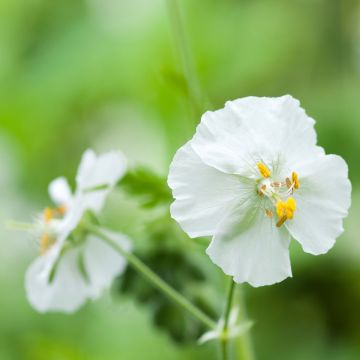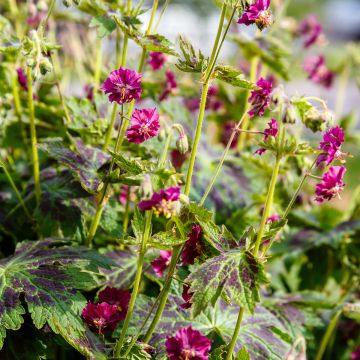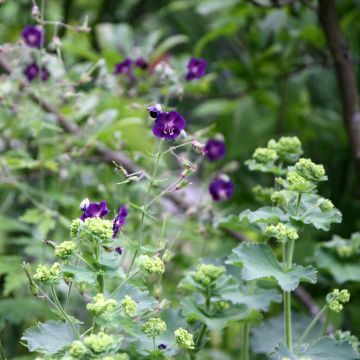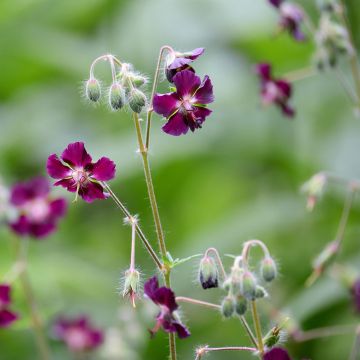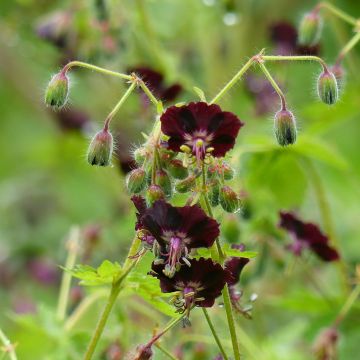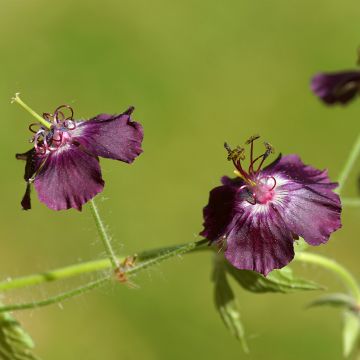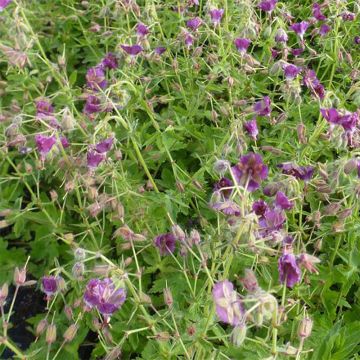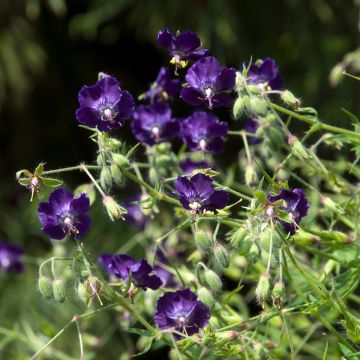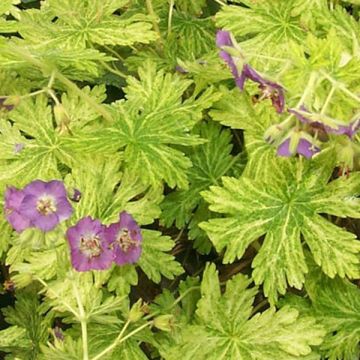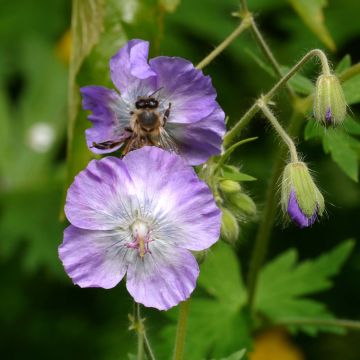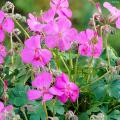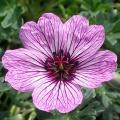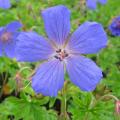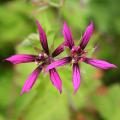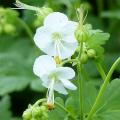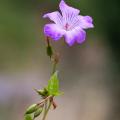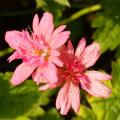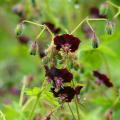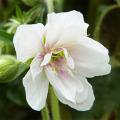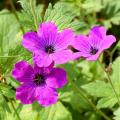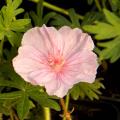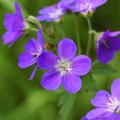Geranium Phaeum
Would this plant suit my garden? Set up your Plantfit profile →
Available in 1 sizes
Available in 1 sizes
Available in 1 sizes
Available in 1 sizes
Available in 1 sizes
Available in 1 sizes
Available in 1 sizes
Available in 1 sizes
Available in 1 sizes
Available in 1 sizes
Geranium phaeum, or dusky cranesbill, is a pretty woodland perennial that stands out with its small, flat and dark flowers, measuring 2 to 3 cm (1in) in diameter, which rise along floral stems well above its leaves adorned with brown chocolate spots. The most well-known variety is undoubtedly 'Samobor', whose flowering displays a purple shade that appears almost black, but the colour palette is very extensive in this species, ranging from white (in 'Album') to dark purple, passing through mauve ('Langthorn's Blue') and pink, depending on its numerous varieties. With this geranium, the charm is also expressed through foliage that persists in winter, for example in the pretty form 'Variegatum', with leaves variegated in cream, white and red. The dusky cranesbill blooms in spring, from May to July depending on the climate and exposure, for about a month.
Perfectly hardy, tolerant regarding soil type as long as it is well-drained, Geranium phaeum likes shade but it accepts almost any exposure: plant it in soil that remains moist if it is in full sun, but it will tolerate a drier soil in the shade of bushes or trees, or in a north-facing or partially shaded bed. Spontaneous seeding is not rare, so it can become invasive: simply remove those that are in the wrong place. It pairs well with shade or partial shade perennials (lamiums, fuchsias, hostas, hellebores, periwinkles, Epimedium...), and is good for adorning the base of hydrangeas, camellias, and pieris.
Haven't found what you were looking for?





































